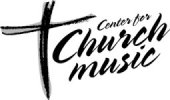Center For Church Music, Songs & Hymns

Recent articles
- Kids Choir Camp 2012: A Soldier of the Cross!
- Thursday Music at Peace
- Kids Choir Camp 2011: A Child of the KING!
- How You Can Help
- The Song of the Cross
Great Hymns of the Faith CDs
Categories
- Music
- The Weight of Glory
- Be Prepared
- Singing Hymns
- Scripture and Song
- Singing Lessons
- John Wesley on Singing
- Colossians 3:16
- Singing: A Call to Excellence
- Worship
- Billys Questions
- The Early Church
- Lent
- Singing Hymns
- C.S. Lewis on Worship
- Kids Choir Camp
- Song and the Spirit
- A Song of Christmas
- Knowing Christ
- Christmas Eve Truce
- Scripture and Song
- Heavenly Song
- Sing Praises
- True Worship
- A Sacrifice of Praise
- From the Choir Director
- Senior Choir Tips
- Worship
- The Last Words of Moses
Our Author

Music & Worship
Hymns and Praise Songs
Next Article >
Here are some thoughts to help clarify differences between traditional hymns and praise and worship songs.
- A hymn is a formal song, sung to God in public worship, typically by the entire congregation. For our discussion, a metrical psalm also fits into this definition of a hymn.
- Technically speaking, a hymn consists of words only, while the music to which a hymn is sung is the hymn tune. For example, "Amazing Grace" is sung to the hymn tune NEW BRITAIN and "Rock of Ages" is sung to TOPLADY. Following Isaac Watts, English hymnody has used poetic meters to pair lyrics with melodies that fit this particular rhythm (e.g., 8.8.8.8.). Hence, words and music can be interchangeable.
- The music of a hymn is what trained musicians call "chordal." Imbedded in this chordal structure is a pattern of melody, harmony and rhythm. This enables the music to strengthen and enhance the text, although the music always submits to the words.
- The structure of a hymn is derived from classical music, which, of course, is its strength.
- Most often a hymn is designed for four-part harmony.
- The most singable (and memorable) hymn tunes are those that combine a strong structure of music, harmony and melody. Because this is a robust musical form, it has been used for hundreds of years and still is being used successfully today.
- Hymns are designed to be sung together by a congregation in public worship. They integrate the mind, sense, and emotion in a way that reinforces all of the positive aspects of the Christian faith in a form that can be passed from one generation to another.
On the other hand, praise and worship songs represent a fundamentally different approach to worship, music, and theology.
- What are today called "praise songs" or "worship songs" represent a loosely defined style of music that is simple in nature, used often in "megachurches."
- Unlike hymns and hymn tunes, praise songs cannot be separated from their music, as the music (more than the words) are the defining factor in a song's appeal.
- Because these songs are sung in unison (no four-part harmony) and the accompaniment consists of a repetitive harmonic formula, their musical range is limited, working against the development of robust congregational singing.
- In a worship context, praise and worship music requires the leadership of a single person or a small group that "performs." The musical instruments used are normally electronic in nature (guitars, for example), requiring artificial amplification.
- Like much of popular culture (of which it is a reflection), its "shelf-life" is short, even disposable. That is why, over the past thirty years, few worship songs have survived.
- The origins of praise and worship songs are the countercultural, charismatic and Jesus movements of the 1960s and 1970s. By the 1980s, some praise songs (like "Majesty") were included in some published hymnals and incorporated in worship services that otherwise followed a more traditional structure. Inclusion in a hymnal, however, did not make them a hymn.
We believe that hymns are superior to praise and worship songs for the purposes of public worship. We also believe that the introduction of praise and worship songs at the expense of hymns is a serious matter with theological implications. Much more is at stake than what meets the eye. So I hope these definitions and characterizations are helpful to you as you discuss this important matter.
